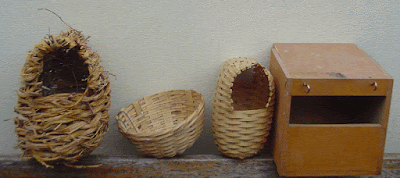Finches are very lovely adorable birds to have them at home. I like these birds so much. These cute little buddies used to sing songs often. The sounds made by them are so gentle to hear. There are many species of finches like Atlantic Canary, Zebra Finch, American Goldfinch, Common red poll, House Finch, etc. But the most popular one among them is the Zebra Finch.
Zebra Finches are the commonly found in Central Australia and ranges over most continents. It is natively found in Indonesia and East Timor. These are proactive birds which need a lot of space to live in and fly around. These birds weigh around 10 to 12 grams and are very delicate in nature.
Let us get into the topic,
Cage setup:
Cage of a zebra finch should be spacious enough in order to make them feel comfortable to fly here and there. There should be small sticks or branches attached to the corners of the cage to make them feel like sitting in the branches of the tree. Also, the breeding box or birds breeding pot should be attached to the cage.
 This type of Cage setup will be the most preferred setup for the Colony breeding. This type of setup will be more natural and the breeding rates will be much higher. This setup consists of natural woods, Plants, and required lightings. If you provide proper ventilation and big windows for sunlight it will be more than enough for the plant's growth and no need for placing an LED bulbs and spending money on electric bills.
This type of Cage setup will be the most preferred setup for the Colony breeding. This type of setup will be more natural and the breeding rates will be much higher. This setup consists of natural woods, Plants, and required lightings. If you provide proper ventilation and big windows for sunlight it will be more than enough for the plant's growth and no need for placing an LED bulbs and spending money on electric bills.
This type of setup will be spacious but the brightness of the light is too high. This will not give a much natural look. But it is so spacious to fly around.

This type of breeding is individual breeding. Here you may not find any problems like fighting with one another at the time of breeding. This fight is purely parental, to save their chicks from other adults.
Nesting:
Every individual breeder has different types of breeding boxes or nests whatever you call. |
| Breeding box and nests |
I personally prefer holed pots. Because pots have the tendency to absorb watery discharge of the new born chicks. Pots are way better than other breeding nets.
 |
| Pot breeding |
Finches used to build its nest with the straws of the grasses. Provide hay inside the cage so that it will be helpful for them to build their nests. Nest building is a biological urge in most of the birds. Always, refurbish their nests when the babies come out of the nest.
 |
| Nest Building |
Laying Eggs and Hatching:
Finches lay an average of 5-8 eggs and start to incubate the eggs. It takes around 2 weeks that is 12-15 days to hatch. Zebra Finches are very good parents they feed the babies often. So you need to provide them nutritional food. Calcium supplements like Cuttle fish bone or crushed egg shells (always keep in mind don't seek for medicinal supplements always go for natural sources and that is good for health). Calcium deficiency may lead to skinny eggs without the outer shell. So calcium supplements are always required for the birds. When the chicks are born it is very much required for complete growth.
Food
The major part of their diet is Millet. They should also be given other food supplements to form part of a balanced diet. These supplements include
1.Cuttle fish bone / Crushed Egg shells - for Calcium
2.Coriander Leaves, Green grass, Spinach - for Minerals
3.Fine pieces of boiled white of Chicken Eggs - for Protein
Keep water available 24/7...
Finches are very good breeders their parenting abilities are exemplary. So it is very easy to breed and take care of zebra finches at home.



Comments
Post a Comment